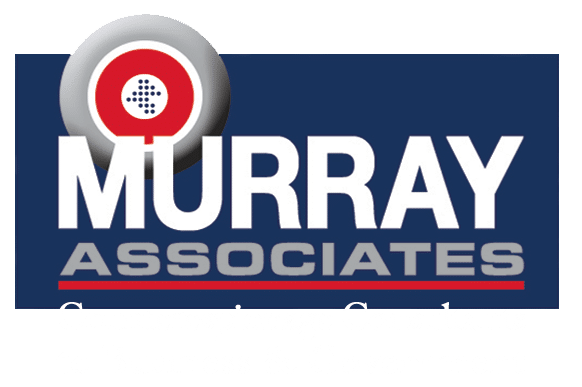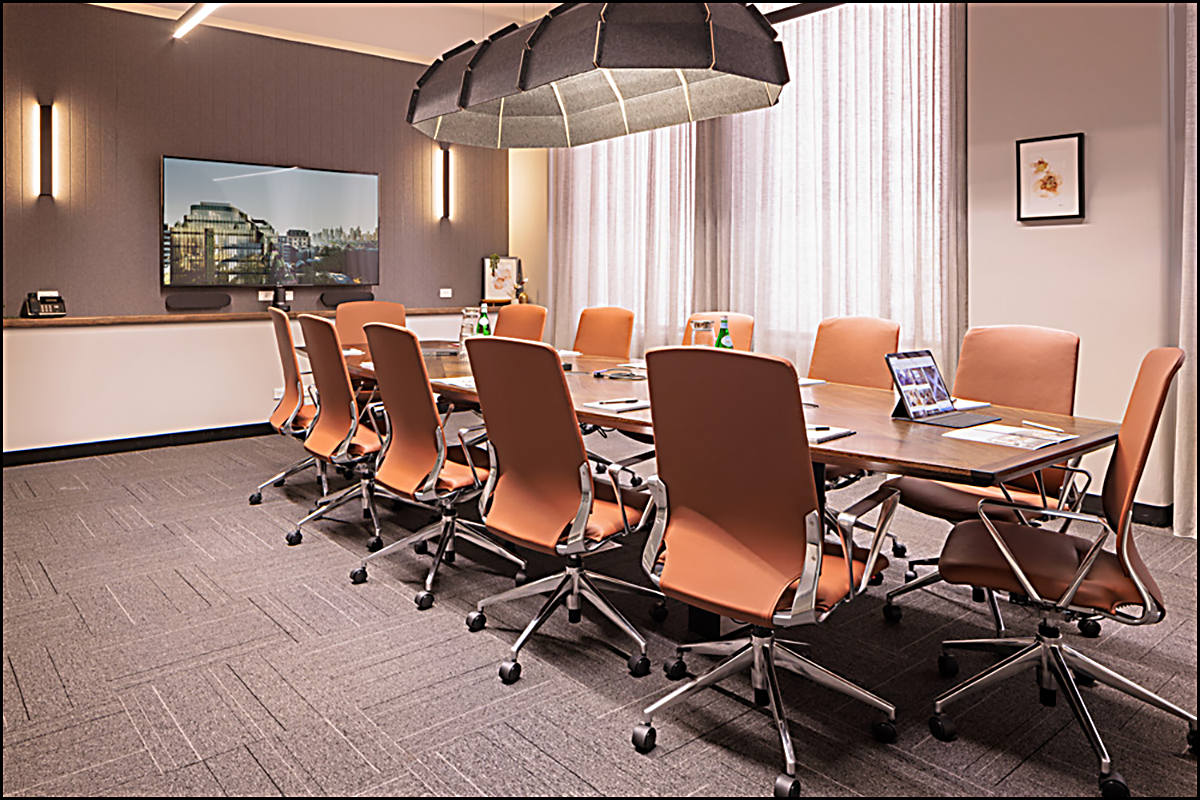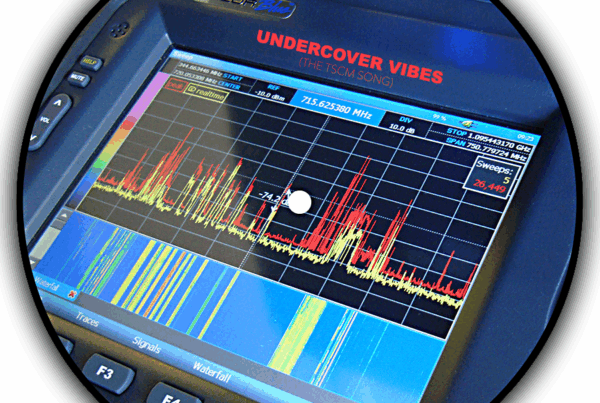 I asked ChatGPT (as an AI Spy)…
I asked ChatGPT (as an AI Spy)…
“This is a picture of a typical boardroom.
You are a spy with advanced technical expertise and an unlimited budget.
Where would you hide an audio eavesdropping device?
Where would you hide a video eavesdropping device?”
Faster than you can say, cone of silence, the AI Spy advised…
Audio Eavesdropping Device Placement (Covert, Effective):
1. Under the Table (Central Underside)
- Why: Conversations naturally converge here. Use a contact microphone or ultra-thin MEMS mic with vibration pickup to capture clear audio from the table surface.
- Execution: Embedded in a custom bracket or adhesive mount, powered via long-life battery or wired through table leg to outlet.
2. Inside One of the Chairs (Backrest or Underside Cushion)
- Why: Proximity to speakers ensures excellent audio capture.
- Execution: Device embedded inside foam, accessible via seam. Could include Bluetooth Low Energy (BLE) trigger for activation when in use.
3. Behind the Wall-Mounted TV or Soundbar
- Why: Electronic blind spot. Easy to conceal behind existing wiring.
- Execution: Powered directly from the TV’s power supply, disguised as part of AV equipment cabling.
Video Eavesdropping Device Placement (Discrete, Strategic FOV):
1. Inside or Behind the Light Fixture Above the Table
- Why: Central and elevated for full-room coverage.
- Execution: Pin-hole camera embedded in the housing or facing downward through a modified aperture. Infrared-capable for low light.
2. Behind the Air Vent or Wall Panel (Left Side)
- Why: Wall-mounted units blend well with hidden pinhole lenses.
- Execution: Camera embedded in or behind a grille or customized slot, aimed diagonally at the conference table.
3. Inside or Behind the TV (Top Bezel or Frame Edge)
- Why: Natural focal point. No suspicion.
- Execution: Pin-hole camera in the upper bezel or behind a one-way film applied to the display corner.
Then, ChatGPT asked me,
“Let me know if you want a detection and sweep plan based on this layout.”
Go for it, you silicone self-licking ice cream cone.
TSCM Detection & Sweep Plan
AI Spy Objective: Detect and neutralize covert audio/video eavesdropping devices in the boardroom shown.
PRE-SWEEP PREPARATION
1. RF Baseline Survey
- Use a spectrum analyzer (0 Hz–12 GHz min) to scan for anomalies.
- Identify known vs unknown signals (Wi-Fi, BLE, DECT, GSM, LTE, etc.).
- Log ambient RF fingerprints for comparison during active sweep.
2. Power Source Mapping
- Document all electrical outlets, junctions, and wall penetration points.
- Identify potential for parasitic power or hardwired devices.
3. Time-of-Day Control
- Perform sweep after hours when the room is idle to prevent masking signals or interference.
- Eliminate all intentional RF (Wi-Fi routers, phones, etc.) during the sweep.
AUDIO SURVEILLANCE DETECTION
1. Table Inspection
- Physical: Visual and tactile check under tabletop and inside cable channels.
- Non-linear Junction Detector (NLJD): Scan underside for semiconductor-based mics or transmitters.
- Contact Microphone Sweep: Use to check for acoustic leakage through table or walls.
2. Inspection of Chairs
- IR Thermography: Look for hidden electronics warming chair foam.
- Density Check: Use portable X-ray scanner or density meter to locate voids or embedded objects in cushion backs.
- Manual Inspection: Focus on seams, underside, and wheel wells.
3. TV & Soundbar Inspection
- Thermal Sweep: Check for heat signatures inconsistent with AV function.
- NLJD & RF Probe: Examine bezel, ports, speaker grilles.
- Port Scanner: Inspect HDMI/USB ports for “spy dongles” (e.g., wireless audio bugs).
VIDEO SURVEILLANCE DETECTION
1. Ceiling Light Fixture
- Optical Lens Detector: Scan for pinhole cameras facing downward.
- IR Camera Sweep: Activate room lights off (sic), scan for IR LED reflections from covert night-vision devices.
- Physical Access: Disassemble light fixture if suspicion arises.
2. Wall Surfaces (including air vent)
- NLJD: Detect hidden semiconductors behind wall panels and framed art.
- IR Imaging: Scan for thermal irregularities behind drywall or vent.
- Visual Detail: Check picture frame screws for tampering, mismatched screws, micro-drilled holes.
3. TV Screen Bezel
- Lens Detection: Sweep for optical glass reflections with laser diode detector.
- Close IR Check: Look for active IR sources from the screen edge.
- Port Access: Look for HDMI/USB signal injectors (transmitting video externally).
RF SURVEILLANCE DETECTION
- Near-Field RF Probe: Trace emitters at close proximity to furniture and fixtures.
- Wideband Receiver with Waterfall Display: Identify frequency-hopping or burst transmitters.
- Time-Domain Reflectometry (TDR): Check in-wall wiring for spliced or modified conductors used as antennas.
POST-SWEEP MEASURES
1. Seal the Room
- Physically tag and seal key access points.
- Apply tamper-indicating tape or sensors at entry points, outlets, and fixtures.
2. Deploy Ongoing Countermeasures
- White Noise Generators: Install around the perimeter to mask conversations.
- Faraday Shielding (optional): Implement shielding paint or film if permanent protection is needed.
3. Red Team Simulation (Optional)
- Conduct a covert device installation test with another operator to validate the detection protocol.
The AI Spy: “Let me know if you want this formatted into a PDF or checklists for field use.”
No, thanks.
Instead, I asked what the cost would be to have the AI Spy conduct the inspection. (Trick question.) It advised that it did not offer physical services, but did provide a very accurate cost breakdown and offered to recommend a reputable TSCM company.
AI Spy Conclusion
The “Boardroom” shown is very simple and very average. At Fortune 100 companies, it would be called a large conference room. Larger Boardrooms have more technical penetration vulnerabilities.
Considering TSCM is a fairly esoteric field, The AI Spy did quite well. There was one major vulnerability it missed, and some possibility debatable minor items. Can you fill in the blanks?
If TSCM is not your field, and you want to learn more, ChatGPT seems to be an effective start. Try asking the question I posed, using a room you might be concerned about.
If you are seeking a corporate counterespionage firm to assist you, there is a shortcut link at the bottom of this page.
——
Kevin D. Murray CPP, CISM, CFE, CDPSE is a business counterespionage consultant and TSCM specialist with over four decades of experience.
Murray Associates is an independent security consulting firm, providing eavesdropping detection and counterespionage services to business, government and at-risk individuals.
Headquartered in the New York metropolitan area, a Murray Associates team can assist you quickly, anywhere in the United States, and internationally.




